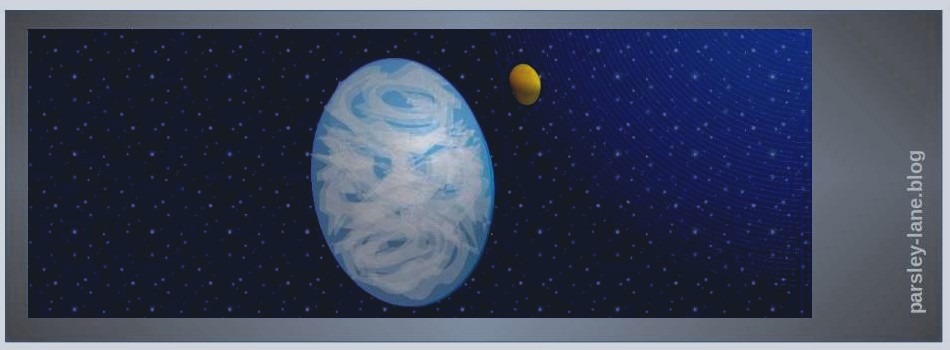Think Oval
From some perspectives, all things are sort of oval.
A few years ago I was a guest at the HKW (‘Haus der Kulturen der Welt’ = ‘House of the Cultures of the World’) in Berlin. I love going there because they have the most fascinating events like concerts, exhibitions, lectures and shows. Also I just love the building. It has a unique architecture with some amazing places, corners and niches. Not to mention the wonderful view of the area around the Tiergarten district from the roof garden, which is planted with a variety of herbs and vegetables.
On this day, a series of events were held on the concept of ‘Whole Earth’. One of the most interesting was a speech by Prof. Fred Turner from Stanford University in California. He gave an insight into the enormous impact of the first images of the Earth from space – the ‘Blue Marble’ – and how it had influenced society, all areas of culture and even technology in the late sixties.
And there was more about how this chain of events had somehow catalyzed the birth of systems thinking and even pushed the right buttons to create a space of innovation and cascading technological development known today as ‘Silicon Valley’. Above all, there was hope and enthusiasm for a future to be created. And with that came a sense of shared responsibility for the Earth as our home – internationally, interculturally, and in peace.
You can see this enthusiasm in the iconic ‘Whole Earth Catalog’, founded by Stewart Brand at the time. There are a few strange things in this catalog, a lot of interesting observations, and some (still) very useful tools for anyone who wants to give the project of creating the future a try. Also, it contains many inspirations on how to build a resilient structure that will sustain our beautiful planet.
Part of the future Stewart Brand envisioned is now our reality. The technological aspects have come true in a way that probably amazes even him. The shared responsibility is still present in some elements and ideas. Like the Planetary Health Diet. It is a concept of nutrition, created in 2019 by the EAT-Lancet Commission on Food, Planet, Health, that not only includes advice on smart nutritional choices for individuals, but also takes into account the possibilities and limits of nature.
The proper diet for the ‘Whole Earth’, so to speak.
… the enormous impact of the first images of the Earth from space – the ‘Blue Marble’ – and how it had influenced society, all areas of culture and even technology in the late sixties. … And with that came a sense of shared responsibility for the Earth as our home – internationally, interculturally, and in peace.
Side Notes:
- After many years of effort, the complete set of the entire Earth Catalog has finally been made freely available online. Yeah!!! Wonderful! You can find the coordinates as well as the other references and links associated with this post under ‘T’ for ‘Think Oval’ and ‘W’ for ‘Whole Earth’ on the [InfoByteSized] page. Take a closer look at the cover of the first edition. The image of the Earth is still special and wonderful. Here you will also find the background to the wonderful event of the HKW (House of the Cultures of the World), the recommendations of the EAT Lancet Commission and the additional ideas to the concept of the Planetary Health Diet of the Scientific German Nutrition Society.
- Just in case you were wondering: I made the artwork above with a simple drawing program from an office suite – free, open-access, open-source software – provided by the Ubuntu community. Their work – probably derived in part from the legacy of the Whole Earth Concept – is an inspiring example of how sharing can build trust and mutual development. THANK YOU for your great work, everyone in the Ubuntu family! And while I am at it: None of this would be possible without the generous support of thousands of people around the world who help make WordPress a tool for a shared and honest World Wide Web experience. THANK YOU! May you all have a wonderful holiday filled with hope, trust, and peace.
